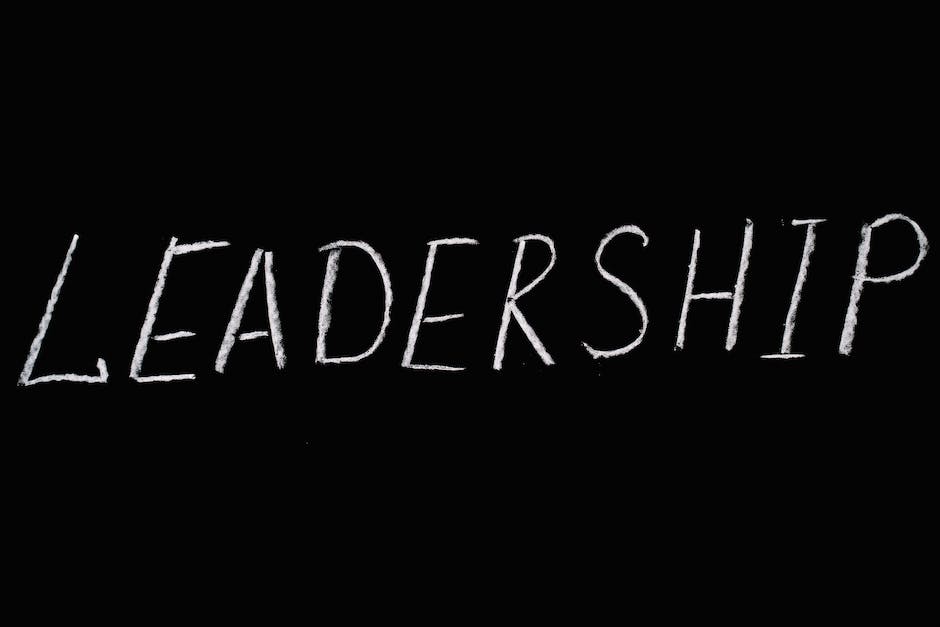Contents
Understanding Trait Leadership Theory
What is Trait Leadership Theory?
In layman’s terms, Trait Leadership Theory is a concept that suggests certain qualities or traits can make an individual a natural leader.
This theory postulates that people are either born with inherent traits essential for leadership, or they develop them over time. Leaders aren’t merely molded by the circumstances they face; they rise above the crowd due to the certain innate traits they possess.
Key Points in Trait Leadership Theory
To get a clear understanding of Trait Leadership Theory, here are its crucial elements:
- Inborn Traits: The theory speculates that individuals are born with specific characteristics, such as confidence and intelligence, which predispose them to be leaders.
- Leadership Potential: According to this theory, not everyone can become a leader. Only those with certain special traits have the potential to be leaders.
- Personality Traits: Characteristics like extraversion, openness, and emotional stability are seen as elements that contribute towards effective leadership.
Practical Examples
Now, let’s simplify things further with some real-life scenarios:
- – Consider Elon Musk, CEO of SpaceX and Tesla. His remarkable vision, innovation, and determination prove the Trait Leadership Theory correct. His inherent traits have played a significant role in his journey to becoming a revered leader in the tech industry.
- – Another prime example could be Oprah Winfrey, a successful media mogul and philanthropist. Her empathetic nature, resilience, and persistence clearly highlight the concept of Trait Leadership Theory.
Understanding the Controversies
No theory is without its share of controversies, and the Trait Leadership Theory is no exception. Here are a few points to consider:
- – Critics argue the theory places too much emphasis on the inborn traits of a leader and not enough on their acquired skills.
- – It’s also termed as static, as it doesn’t put much weight on the individual’s growth or the varying context of leadership.

Limitations of Trait Leadership Theory
The Trait Leadership Theory is hailed for recognizing the key personality traits that mold effective leaders. However, it’s important to note that it’s not without its fair share of controversy and criticism.
There are several key limitations to this theory that can potentially derail its effectiveness.
Lack of Universality
One common complaint against the Trait Leadership Theory is the lack of universality.
Simply put, not all leaders demonstrate the same traits. The environment, culture, team dynamics, and the nature of the task can heavily influence the traits that make a leader effective. It’s difficult to assert that certain traits will universally result in effective leadership, as what works in one setting may not work in another.
Missing the Role of Followers
Another argument against Trait Leadership Theory is its tendency to ignore the role of followers. A key part of effective leadership is the ability to inspire, motivate, and steer followers towards a common goal.
Unfortunately, the Trait Leadership Theory tends to focus on the leader’s inherent traits and oftentimes overlooks the importance of the followers’ response and receptivity to the leader.
Disregard for Situational Factors
The Trait Leadership Theory, in its focus on inherent characteristics, sometimes fails to account for the impact of external or situational factors. The theory implies that certain traits will always breed success, regardless of the prevailing circumstances.
However, we can disagree with this viewpoint, as a great leader should adapt to changing situations and lead effectively irrespective of the environment or situation.
Over-reliance on Nature Over Nurture
The Trait Leadership Theory leans heavily towards the nature side of the nature versus nurture debate, with a clear emphasis on inherited traits. This over-reliance tends to undermine the significance of learned behaviors, experiences, and skill development, all of which can mold effective leaders.
Limited Predictive Power
Finally, despite its intentions, the Trait Leadership Theory has limited predictive power. Certain traits may suggest a potential for great leadership, but these alone do not guarantee success. Performance cannot be reliably predicted by traits alone; there are many examples of people who possess the so-called “leadership traits,” but have not proven competent in a leadership role.

Applying Trait Leadership Theory Criticisms
Let’s take a look at what happens when the criticisms of the Trait Leadership Theory unfold in the real-life leadership situations.
Trait Leadership Theory posits that leaders are born, not made.
While this might sound quite convincing, do all leaders truly embody inherently great leadership traits? Isn’t it the case in the business world that not every effective leader was born to lead?
Here’s a practical case – consider a business organization that has thrived under the leadership of an individual who had no prior leadership experience, but rose to the position due to their hard work, determination, and constant learning. This clearly contradicts the theory’s argument on inborn leadership.
Overlooking the Influence of Followers
A prime criticism of this theory is its ignorance of the role of followers in shaping leadership. It’s not unusual for leaders to alter their approach based on the response, feedback, and behavior of their followers.
Just cite the case of leaders in consumer-centric companies. They have to adapt and adjust their strategies based on customer feedback. This showcases that leadership isn’t solely a trait-based affair but is dictated by followers’ responses.
Underestimated Impact of Situational Factors
Here’s another loophole of this theory – it disregards the influence of situational factors. Take the example of a leader who operates well under normal circumstances, but wilts under pressure or crises. This scenario highlights the limitations of the theory by demonstrating how situational factors can significantly impact leadership.
Nature Over Nurture Debatable
By belittling the ‘nurture’ aspect, the Trait Leadership Theory overlooks the potential development of leadership traits through learning and experience. Think about those instances when an ordinary employee rises to the occasion in the absence of the team leader and steers the group towards success. Doesn’t this validate the theory’s over-reliance on ‘nature’ over ‘nurture’?
Predictive Power Insufficient
It is often noticed that individuals with strong leadership traits can fail miserably at leadership responsibilities. This stresses the theory’s limited predictive power.
For instance, while an individual may possess traits such as intelligence or self-confidence, they may lack the essential skills such as decision making or problem-solving to become an effective leader.

Alternative Theories of Leadership
In light of the criticisms of the Trait Leadership Theory, numerous other theories have stepped into the limelight to offer a more well-rounded and nuanced understanding of leadership. Here are a few of them.
- Behavioral Leadership Theory
Unlike the Trait Leadership Theory that emphasizes inherent traits and personality type, the Behavioral Leadership Theory assumes that leadership can be learned. Leaders are made, not born – a stark contrast to the concept underlying the Trait theory.
The Behavioral Leadership Theory focuses on the behaviors and actions of leaders rather than their inherent traits. For example, in a company experiencing a downturn, a leader might adopt the behavior of being more encouraging and optimistic to motivate employees rather than rely on inherent traits.
- Situational Leadership Theory
The Situational Leadership Theory overcomes the criticism of trait leadership failing to consider the impact of external factors. Put simply, leadership depends on the situation. What’s effective in one situation may not work in another.
A leader running a creative arts studio might need to adopt a different leadership style than someone overseeing a military operation.
Our studio leader might adopt a democratic style, encouraging creativity and innovation, while the military officer might need an authoritative style to ensure absolute discipline and obedience.
- Transformational Leadership Theory
This theory advocates that true leaders are ones who motivate their followers to exceed their own self-interest for the good of the group or organization.
This theory addresses the criticism of Trait Leadership Theory that it overlooks the impact on followers. Leaders who meet the transformational leadership construct can inspire followers to accomplish things beyond what they thought possible.
- Transactional Leadership Theory
Unlike Trait Leadership Theory, the Transactional Leadership Theory emphasizes the relationship between leader and follower. By focusing on clear structures, defined roles, and rewards or punishments based on performance, this theory is often effective in organizations that operate on a strict hierarchy.
Remember how the basketball coach rewards extra playing time to players who exhibit hard work and dedication during practice? That’s a perfect example of transactional leadership.

Wrap-up
While Trait Leadership Theory has played a pivotal role in shaping modern understanding of leadership, its limitations and criticisms provide a springboard for further exploration and innovation in the realm of leadership theories.
The theory’s failure to consider situational factors and its overemphasis on individual traits underscore the need for a more holistic approach to understanding leadership. This exploration reveals the fluidity and dynamism inherent in leadership and paves the way for alternative models that consider a broader spectrum of factors, promising a deeper and more nuanced interpretation of what it really means to lead.
In the ever-evolving landscape of leadership theories, each critique, each discourse and each alternative theory is not only a step to refine our understanding but also an opportunity to contribute meaningfully to the complex discourse of leadership.

